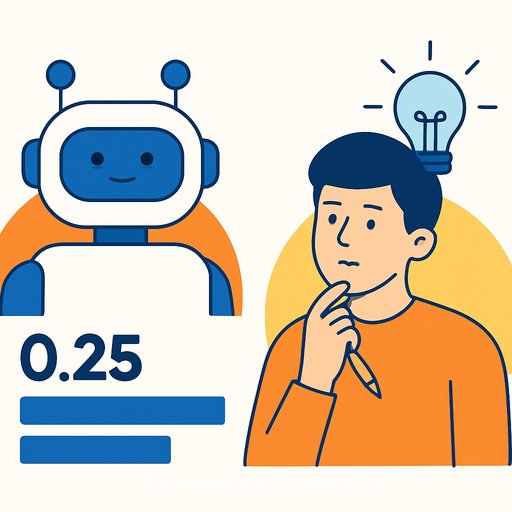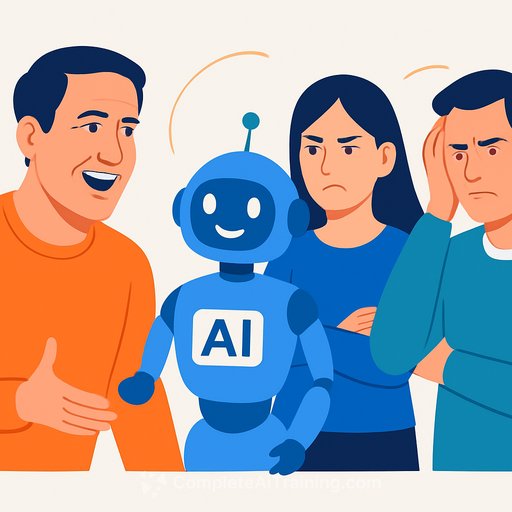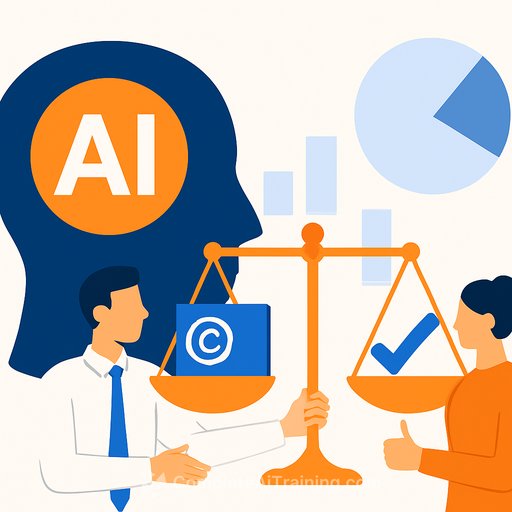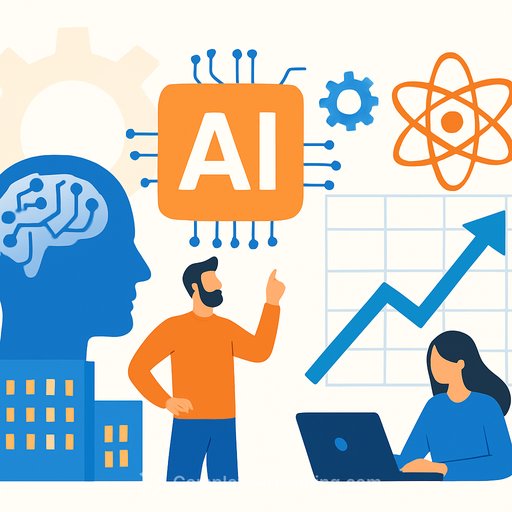Study: Generative AI hits a hard ceiling on creativity
A new Australian study puts numbers to what many creatives feel: large language models can be useful, but they cap out at "average." The research calculates a maximum creative score of 0.25 on a 0-1 scale for systems like ChatGPT, based on how they're built and how they generate outputs.
The work, led by creativity expert Professor David Cropley at the University of South Australia, argues that under current design principles, LLMs can mimic creative behavior yet won't reach expert-level originality. That has clear implications for how writers, artists, designers, and producers should use these tools.
What the research actually found
The study formalizes AI "creativity" using the internal mechanics of LLMs and standard math. The result: a ceiling at 0.25, meaning outputs cluster around what's expected and statistically likely, not what breaks the pattern.
In plain terms, an LLM can assemble convincing work, but it trends toward the middle. It doesn't occasionally jump the fence with something startlingly original and effective like a skilled human does.
For reference, see the paper: "The Cat Sat on the … ? Why Generative AI Has Limited Creativity" in The Journal of Creative Behavior.
Why AI looks creative-but isn't, by creative standards
These systems are trained on vast datasets and generate what's statistically probable. That's useful for speed and coverage, but it leans toward formulaic results.
Creativity, properly defined, requires outputs that are new, original, and effective. Generating a lot of content isn't the same as generating uncommon, high-impact ideas.
The study also notes a skew: because most people sit below the "average creativity" mark, many will see LLM outputs as creative. Highly creative people tend to spot the sameness immediately.
What this means for working creatives
AI won't replace your best work. It will flatten your voice if you overuse it. If teams lean on LLMs for core creative tasks, they'll ship more content that feels samey-safe structures, familiar tropes, predictable hooks.
Used well, AI is a support tool. It can help you move faster, explore options, and reduce grunt work. It should not be your taste, your voice, or your final draft.
Practical ways to use AI without losing your edge
- Idea expansion, not idea selection: Generate options, then you choose and combine. Your taste is the differentiator.
- Constraint prompts: Force surprise. Ask for "unexpected analogies," "cross-genre blends," or "remove the most obvious choice and try again."
- Draft scaffolding: Use AI for outlines, beats, or scene lists. You do the language, rhythm, and subtext.
- Anti-average passes: After an AI draft, cut clichés, invert the default, and replace generic phrasing with lived details.
- Reference mining: Ask for edge-case references, niche sources, or historical examples, then synthesize them yourself.
- Deliberate rule-breaking: Give it strict rules, then instruct it to break one rule in a way that strengthens the piece-and evaluate the result yourself.
Where AI still helps your workflow
- Research summaries and comparison tables you refine
- Transcripts, cleanup, and mundane rewrites
- Style stress-tests: "Rewrite this paragraph in three contrasting tones" for perspective, not as a final voice
- Brainstorming volume to shake loose your own original take
What would need to change for AI to reach expert-level creativity
The study suggests it would take new architecture-systems that aren't bound to past statistical patterns in the same way. Until then, LLMs will skew toward safe averages.
Bottom line
Your competitive advantage is still your taste, your lived context, and your willingness to push past the obvious. Let AI handle the tedious parts. Use it to think wider, not to think for you.
Further reading and useful resources
- Original study: The Journal of Creative Behavior
- Want structured practice using AI as a support tool, not a crutch? Explore practical course paths at Complete AI Training - Courses by Job and prompt skills at Prompt Engineering
Your membership also unlocks:






